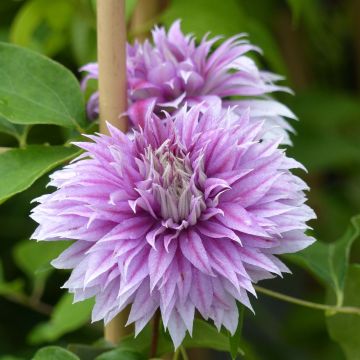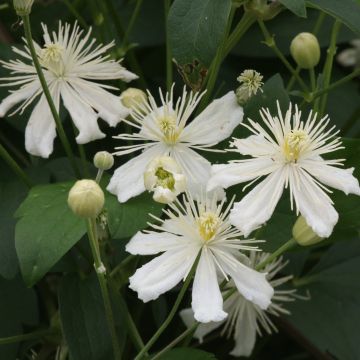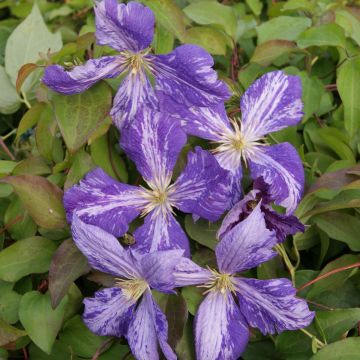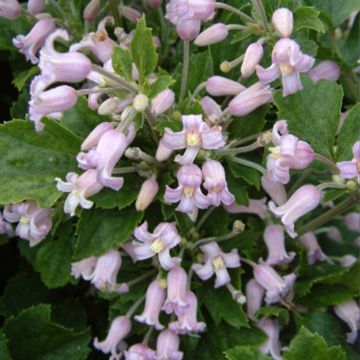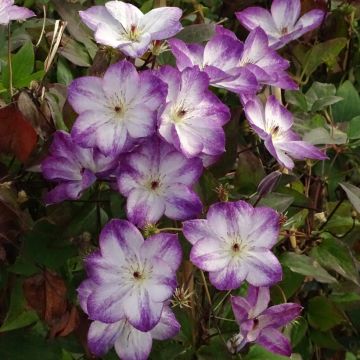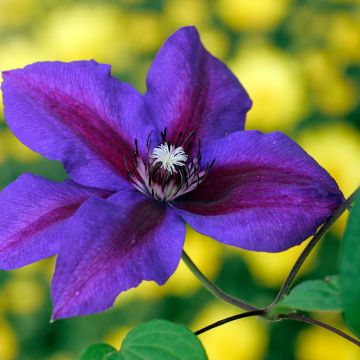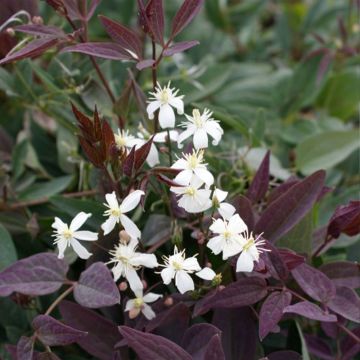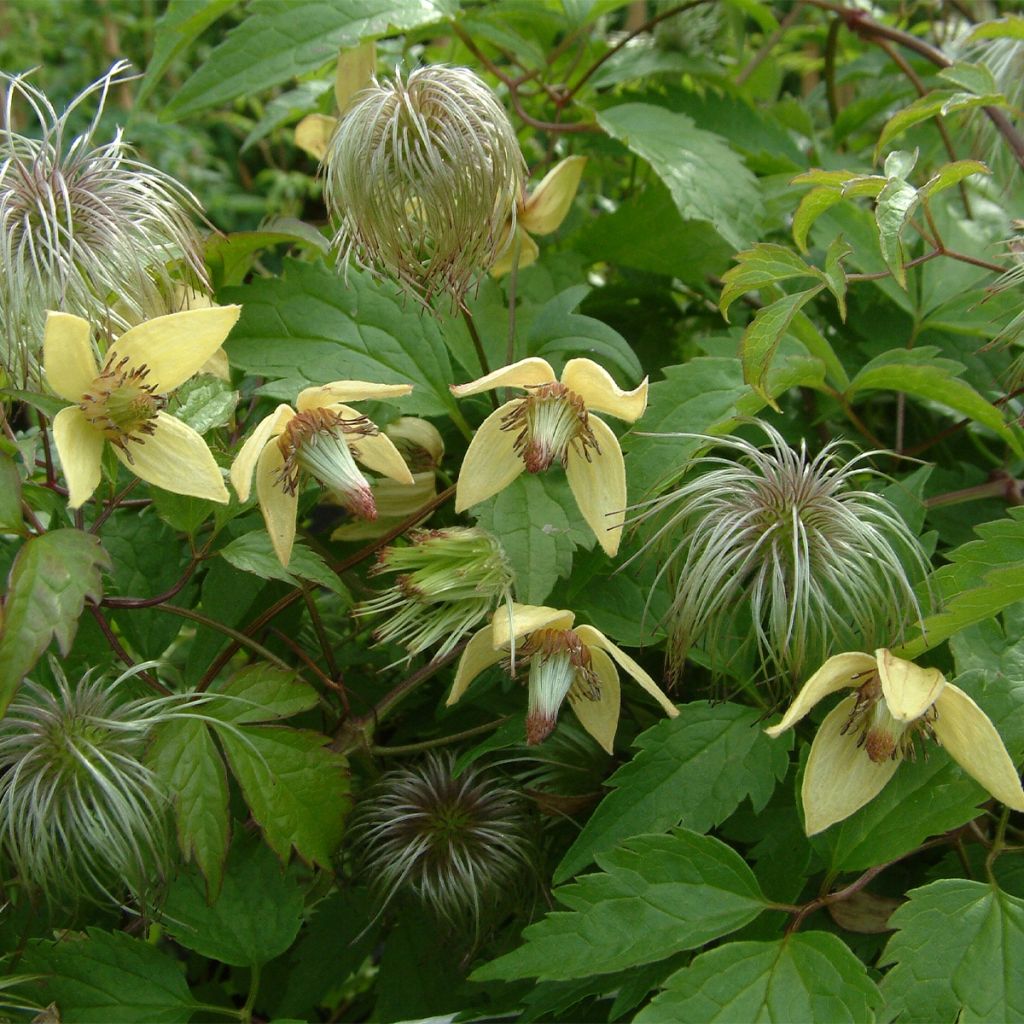

Clematis serratifolia
Clematis serratifolia
Clematis serratifolia
Korean Clematis
Special offer!
Receive a €20 voucher for any order over €90 (excluding delivery costs, credit notes, and plastic-free options)!
1- Add your favorite plants to your cart.
2- Once you have reached €90, confirm your order (you can even choose the delivery date!).
3- As soon as your order is shipped, you will receive an email containing your voucher code, valid for 3 months (90 days).
Your voucher is unique and can only be used once, for any order with a minimum value of €20, excluding delivery costs.
Can be combined with other current offers, non-divisible and non-refundable.
Home or relay delivery (depending on size and destination)
Schedule delivery date,
and select date in basket
This plant carries a 6 months recovery warranty
More information
We guarantee the quality of our plants for a full growing cycle, and will replace at our expense any plant that fails to recover under normal climatic and planting conditions.
Would this plant suit my garden?
Set up your Plantfit profile →
Description
Clematis serratifolia is part of the group of 'oriental' clematis, known for their hardiness and ease of cultivation, and characterized by small pendulous bell-shaped flowers in shades of yellow. This particular species, sometimes called Korean clematis, is a botanic species with a very natural charm, with a relatively late pale yellow flowering and a slight fragrance, as well as particularly abundant and decorative seed heads. It can be planted as ground cover or in a small informal hedge with decorative fruit-bearing or autumn foliage shrubs.
Clematis serratifolia (synonyms Clematis orientalis var. serrata, Clematis wilfordii) belongs to the Ranunculaceae family. It is native to Korea and Manchuria and found in a few other regions of East Asia. This clematis was introduced to the West around 1918 by EH Wilson. It has produced excellent cultivars through hybridisation, such as Golden Harvest or Golden Tiara.
In our climates, this Korean clematis climbs up to 2-3m (7-10ft) high by clinging to its support using tendrils. Its foliage is composed of leaves divided into 5 small toothed, vibrant green leaflets. This foliage gives an air of lightness and delicacy, rather than volume. It is deciduous, absent in winter. Flowering occurs over a month, between August and September, earlier or later depending on the climate. The flowers appear alone or in groups of two or three on new wood, mainly in the axils of the upper leaves. They open in two stages: the four sepals with a leathery texture in pale yellow or cream colour first form a bell, then open widely to reveal a centre filled with numerous dark brown-violet stamens. When half open, the flowers measure from 2.5 to 5 cm (1 to 2in) in diameter. They give off a lemony fragrance, more noticeable when they are in the sun. This flowering is loved by bees and other pollinators. After flowering, decorative seed heads appear, ending with a silvery grey, feathery style.
Clematis serratifolia thrives in sunny spots with shade at the base. It is perfect for dressing up a fence, climbing in a shrub, or being left to grow free as ground cover. Its late flowering and beautiful silky seeds will go well with the fruits of ornamental apple trees, the purplish foliage of dyer's vine or the scarlet foliage of Red Cascade euonymus. This small vine will also be splendid in a large English rose with yellow or orange flowers (Graham Thomas, Malvern Hills). This clematis, left free without support, will form a thicket adorned with pale yellow bells next to the blue-violet bells of the Clematis diversifolia Rooguchi for example. It is easy to grow in full sun or partial shade, in fertile and well-draining soil.
Tips: Avoid excessive fertiliser that promotes foliage at the expense of flowers. Do not mulch, to avoid excessive moisture that promotes clematis wilt.
Report an error about the product description
Clematis serratifolia in pictures
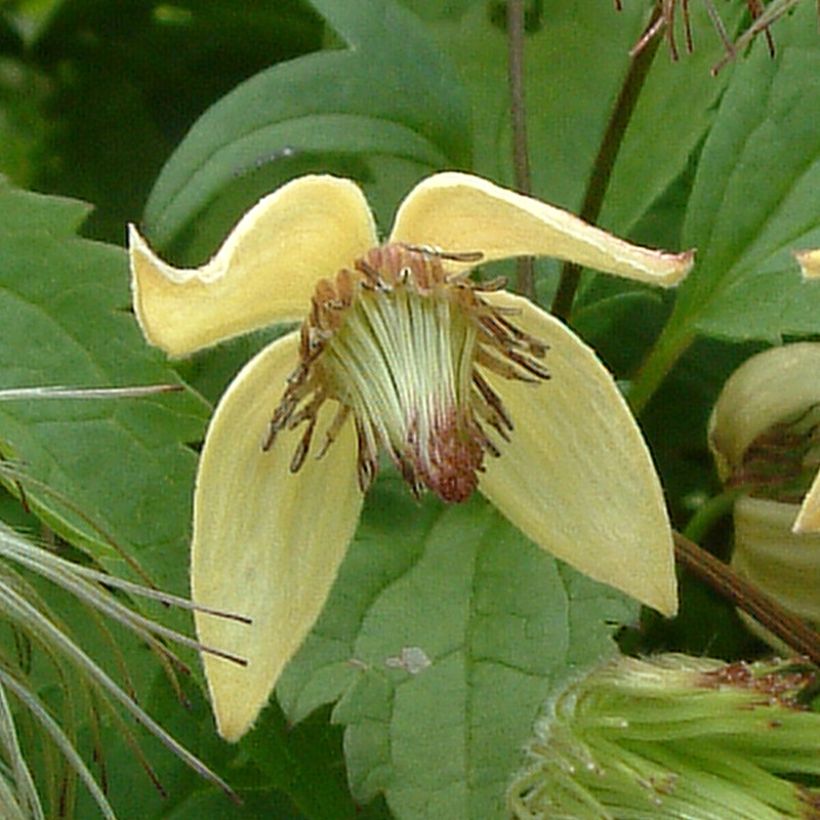



Plant habit
Flowering
Foliage
Botanical data
Clematis
serratifolia
Ranunculaceae
Korean Clematis
East Asia
Other Clematis A to Z
View all →Planting and care
Cleamatis serratifolia grows in ordinary, but well-drained soil. Make sure its base remains in the shade, but the rest is exposed to the sun. A ground cover plant like a perennial geranium or a heuchera can be planted to shade the base of the clematis. The installation of a thick mulch near the base (not on top) can also help. This plant has a fibrous root system that does not like transplanting, so choose its location carefully from the start.
Young plants should not lack water when getting established. Monitor watering during the first two or three years, especially in summer and even more so if it is very dry. It is best to water in the evening, often and in small quantities. During winter, the roots should be kept moist but not waterlogged. A mature plant is quite drought-tolerant. Proper soil drainage is crucial for the successful cultivation of Clematis serratifolia, which does not tolerate stagnant moisture in winter. In properly drained soil, its hardiness is excellent (beyond -15°C (5°F)).
Planting period
Intended location
Care
This item has not been reviewed yet - be the first to leave a review about it.
Similar products
Haven't found what you were looking for?
Hardiness is the lowest winter temperature a plant can endure without suffering serious damage or even dying. However, hardiness is affected by location (a sheltered area, such as a patio), protection (winter cover) and soil type (hardiness is improved by well-drained soil).

Photo Sharing Terms & Conditions
In order to encourage gardeners to interact and share their experiences, Promesse de fleurs offers various media enabling content to be uploaded onto its Site - in particular via the ‘Photo sharing’ module.
The User agrees to refrain from:
- Posting any content that is illegal, prejudicial, insulting, racist, inciteful to hatred, revisionist, contrary to public decency, that infringes on privacy or on the privacy rights of third parties, in particular the publicity rights of persons and goods, intellectual property rights, or the right to privacy.
- Submitting content on behalf of a third party;
- Impersonate the identity of a third party and/or publish any personal information about a third party;
In general, the User undertakes to refrain from any unethical behaviour.
All Content (in particular text, comments, files, images, photos, videos, creative works, etc.), which may be subject to property or intellectual property rights, image or other private rights, shall remain the property of the User, subject to the limited rights granted by the terms of the licence granted by Promesse de fleurs as stated below. Users are at liberty to publish or not to publish such Content on the Site, notably via the ‘Photo Sharing’ facility, and accept that this Content shall be made public and freely accessible, notably on the Internet.
Users further acknowledge, undertake to have ,and guarantee that they hold all necessary rights and permissions to publish such material on the Site, in particular with regard to the legislation in force pertaining to any privacy, property, intellectual property, image, or contractual rights, or rights of any other nature. By publishing such Content on the Site, Users acknowledge accepting full liability as publishers of the Content within the meaning of the law, and grant Promesse de fleurs, free of charge, an inclusive, worldwide licence for the said Content for the entire duration of its publication, including all reproduction, representation, up/downloading, displaying, performing, transmission, and storage rights.
Users also grant permission for their name to be linked to the Content and accept that this link may not always be made available.
By engaging in posting material, Users consent to their Content becoming automatically accessible on the Internet, in particular on other sites and/or blogs and/or web pages of the Promesse de fleurs site, including in particular social pages and the Promesse de fleurs catalogue.
Users may secure the removal of entrusted content free of charge by issuing a simple request via our contact form.
The flowering period indicated on our website applies to countries and regions located in USDA zone 8 (France, the United Kingdom, Ireland, the Netherlands, etc.)
It will vary according to where you live:
- In zones 9 to 10 (Italy, Spain, Greece, etc.), flowering will occur about 2 to 4 weeks earlier.
- In zones 6 to 7 (Germany, Poland, Slovenia, and lower mountainous regions), flowering will be delayed by 2 to 3 weeks.
- In zone 5 (Central Europe, Scandinavia), blooming will be delayed by 3 to 5 weeks.
In temperate climates, pruning of spring-flowering shrubs (forsythia, spireas, etc.) should be done just after flowering.
Pruning of summer-flowering shrubs (Indian Lilac, Perovskia, etc.) can be done in winter or spring.
In cold regions as well as with frost-sensitive plants, avoid pruning too early when severe frosts may still occur.
The planting period indicated on our website applies to countries and regions located in USDA zone 8 (France, United Kingdom, Ireland, Netherlands).
It will vary according to where you live:
- In Mediterranean zones (Marseille, Madrid, Milan, etc.), autumn and winter are the best planting periods.
- In continental zones (Strasbourg, Munich, Vienna, etc.), delay planting by 2 to 3 weeks in spring and bring it forward by 2 to 4 weeks in autumn.
- In mountainous regions (the Alps, Pyrenees, Carpathians, etc.), it is best to plant in late spring (May-June) or late summer (August-September).
The harvesting period indicated on our website applies to countries and regions in USDA zone 8 (France, England, Ireland, the Netherlands).
In colder areas (Scandinavia, Poland, Austria...) fruit and vegetable harvests are likely to be delayed by 3-4 weeks.
In warmer areas (Italy, Spain, Greece, etc.), harvesting will probably take place earlier, depending on weather conditions.
The sowing periods indicated on our website apply to countries and regions within USDA Zone 8 (France, UK, Ireland, Netherlands).
In colder areas (Scandinavia, Poland, Austria...), delay any outdoor sowing by 3-4 weeks, or sow under glass.
In warmer climes (Italy, Spain, Greece, etc.), bring outdoor sowing forward by a few weeks.






























